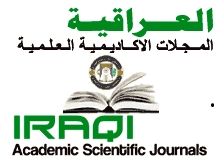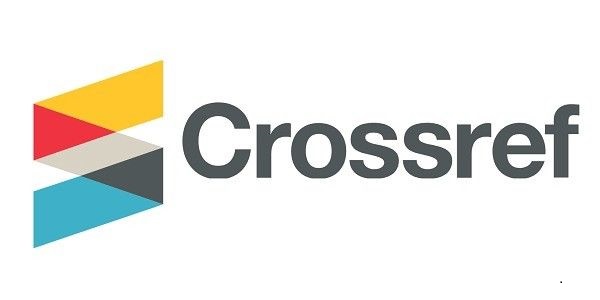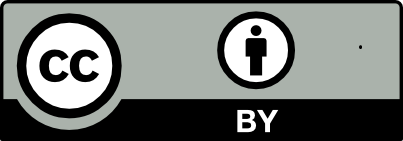Effects of Nanopolystyrene on the Chlorophyll pigment content of Chlorella vulgaris
DOI:
https://doi.org/10.56714/bjrs.50.2.18Keywords:
Chlorophyll, Chlorella, Microplastics, Light, SpectrumAbstract
This study used a long-term toxicity test to investigate how the microalga Chlorella vulgaris responded to nanopolysteren exposure under different light spectrums. Our experiment involved subjecting algae to polystyrene doses of 0, 0.5, 5, and 10 mg/L. We design an incubator consisting of three sections, each offering a distinct red, blue, and white light spectrum, for the purpose of cultivating algal colonies. Chlorophyll-a and b were estimated at consistent time intervals (1, 4, and 10 days) during the 29-day incubation period, using three replicate samples for each treatment. Experimental results have demonstrated a reduction in both algal cell viability and chlorophyll concentration when exposed to (5 and 10 mg/l) of nanopolysterene. The findings of our study indicate that the growth and chlorophyll content of C. vulgaris are significantly affected by the red-light spectrum and with the increase of nanopolyesterne concentrations.
Downloads
References
M. Contino, G. Ferruggia, S. Indelicato, R. Pecoraro, E.M. Scalisi,A. Salvaggio, & M.V. Brundo (2023). Sublethal Effects of Polystyrene Nanoplastics on the Embryonic Development of Artemia salina (Linnaeus, 1758). Animals, 13(19), 3152. Doi: https://doi.org/10.3390/ani13193152.
K.Tallec, O. Blard, C.González-Fernández, G. Brotons,M. Berchel, P. Soudant, ., ... & I.Paul-Pont (2019). Surface functionalization determines behavior of nanoplastic solutions in model aquatic environments. Chemosphere, 225, 639-646. Doi: https://doi.org/10.1016/j.chemosphere.2019.03.077.
S.Rana, & A. Kumar (2022). Toxicity of nanoparticles to algae-bacterial co-culture: Knowns and unknowns. Algal Research, 62, 102641. Doi: https://doi.org/10.1016/j.algal.2022.102641.
M.T. Ahmad, M. Shariff, F. Md. Yusoff, Y.M. Goh, & S. Banerjee (2020). Applications of microalga Chlorella vulgaris in aquaculture. Reviews in aquaculture, 12(1), 328-346. Doi: https://doi.org/10.1111/raq.12320.
M. Xu, F. Zhu, Y. Yang, M. Liu, X. Li,Y. Jiang., ... & X.Zhang (2024). Mechanism of transport and toxicity response of Chlorella sorokiniana to polystyrene nanoplastics. Ecotoxicology and Environmental Safety, 270, 115901. Doi: https://doi.org/10.1016/j.ecoenv.2023.115901.
E.Syranidou, K. Karkanorachaki, F. Amorotti, M. Franchini, E. Repouskou, M. Kaliva, M., ... & N. Kalogerakis (2017). Biodegradation of weathered polystyrene films in seawater microcosms. Scientific reports, 7(1), 17991. Doi: https://doi.org/10.1038/s41598-017-18366-y.
K. Kik, B. Bukowska, & P. Sicińska (2020). Polystyrene nanoparticles: Sources, occurrence in the environment, distribution in tissues, accumulation and toxicity to various organisms. Environmental Pollution, 262, 114297. Doi: https://doi.org/10.1016/j.envpol.2020.114297.
J. K. Wan,W.L. Chu, Y.Y. Kok, & C. S. Lee, (2021). Influence of polystyrene microplastic and nanoplastic on copper toxicity in two freshwater microalgae. Environmental Science and Pollution Research, 28, 33649-33668. Doi: https://doi.org/10.1007/s11356-021-12983-x.
S. L.Wright, & F. J. Kelly, (2017). Plastic and human health: a micro issue?. Environmental science & technology, 51(12), 6634-6647. Doi: https://doi.org/10.1021/acs.est.7b00423.
A. Jahnke, H.P.H. Arp, B.I Escher, B. Gewert, E. Gorokhova, D. Kühnel, ... & M. MacLeod, (2017). Reducing uncertainty and confronting ignorance about the possible impacts of weathering plastic in the marine environment. Environmental Science & Technology Letters, 4(3), 85-90. Doi: https://doi.org/10.1021/acs.estlett.7b00008.
S. Karbalaei, P. Hanachi, T.R.Walker, & M. Cole (2018). Occurrence, sources, human health impacts and mitigation of microplastic pollution. Environmental science and pollution research, 25, (36) ,36046-36063. Doi: https://doi.org/10.1007/s11356-018-3508-7.
J. C .Prata, J. P. da Costa,A. V. Girão, I.. Lopes, A.C. Duarte, & T. Rocha-Santos (2019). Identifying a quick and efficient method of removing organic matter without damaging microplastic samples. Science of the total environment, 686, 131-139. Doi: https://doi.org/10.1016/j.scitotenv.2019.05.456.
O.O. Fadare, B. Wan, L.H. Guo, & L.Zhao, (2020). Microplastics from consumer plastic food containers: are we consuming it?. Chemosphere, 253, 126787. Doi: https://doi.org/10.1016/j.chemosphere.2020.126787.
L. Manfra, A. Rotini, E. Bergami, G. Grassi, C. Faleri, & I. Corsi, (2017). Comparative ecotoxicity of polystyrene nanoparticles in natural seawater and reconstituted seawater using the rotifer Brachionus plicatilis. Ecotoxicology and environmental safety, 145, 557-563. Doi: https://doi.org/10.1016/j.ecoenv.2017.07.068.
Y. Chae, D. Kim, &Y.J. An, (2019). Effects of micro-sized polyethylene spheres on the marine microalga Dunaliella salina: focusing on the algal cell to plastic particle size ratio. Aquatic Toxicology, 216, 105296. Doi: https://doi.org/10.1016/j.aquatox.2019.105296.
L.J. Hazeem, G. Yesilay, M. Bououdina, S. Perna, D. Cetin, Z. Suludere, ... & R. Boukherroub, (2020). Investigation of the toxic effects of different polystyrene micro-and nanoplastics on microalgae Chlorella vulgaris by analysis of cell viability, pigment content, oxidative stress and ultrastructural changes. Marine Pollution Bulletin, 156, 111278. Doi: https://doi.org/10.1016/j.marpolbul.2020.111278.
E. Ahmadifar, M. Yousefi, M. Karimi, R. Fadaei Raieni, M. Dadar, S. Yilmaz, ... & H.M. Abdel-Latif, (2021). Benefits of dietary polyphenols and polyphenol-rich additives to aquatic animal health: an overview. Reviews in Fisheries Science & Aquaculture, 29(4), 478-511. Doi: https://doi.org/10.1080/23308249.2020.1818689.
C. Matthews, F. Moran, & A.K. Jaiswal, (2021). A review on European Union’s strategy for plastics in a circular economy and its impact on food safety. Journal of cleaner production, 283, 125263. Doi: https://doi.org/10.1016/j.jclepro.2020.125263.
E. Besseling, B. Wang, M. Lurling, & A.A. Koelmans, (2014). Nanoplastic affects growth of S. obliquus and reproduction of D. magna. Environmental science & technology, 48(20), 12336-12343. Doi: https://doi.org/10.1021/es503001d.
P. Bhattacharya, S. Lin, J. P. Turner, & P.C. Ke, (2010). Physical adsorption of charged plastic nanoparticles affects algal photosynthesis. The journal of physical chemistry C, 114(39), 16556-16561. Doi: https://doi.org/10.1021/jp1054759.
T.M. Nolte, N.B. Hartmann, J.M.. Kleijn, J. Garnæs, D. Van De Meent, A.J.., Hendriks, & A. Baun, (2017). The toxicity of plastic nanoparticles to green algae as influenced by surface modification, medium hardness and cellular adsorption. Aquatic toxicology, 183, 11-20. Doi: https://doi.org/10.1016/j.aquatox.2016.12.005.
A. Oukarroum, S. Bras, F. Perreault, & R. Popovic, (2012). Inhibitory effects of silver nanoparticles in two green algae, Chlorella vulgaris and Dunaliella tertiolecta. Ecotoxicology and environmental safety, 78, 80-85. Doi: https://doi.org/10.1016/j.ecoenv.2011.11.012.
M. Khoshnamvand, P. Hanachi, S. Ashtiani, & T.R. Walker, (2021). Toxic effects of polystyrene nanoplastics on microalgae Chlorella vulgaris: Changes in biomass, photosynthetic pigments and morphology. Chemosphere, 280, 130725. Doi: https://doi.org/10.1016/j.chemosphere.2021.130725.
M. L.Anderson. . A preliminary investigation of the enzymatic inhibition of 5α-reductase and growth of prostatic carcinoma cell line LNCap-FGC by natural astaxanthin and saw palmetto lipid extract in vitro. Journal of Herbal Pharmacotherapy,2005, 5(1), 17-26. Available:https://www.cabidigitallibrary.org/doi/full/10.5555/20053197663.
J.R. Hunter. “Extraction of Micro-and Nano-Plastic Particles from Water Using Hydrophobic Natural Deep Eutectic Solvents”. Master Theses and Dissertations--Biosystems and Agricultural Engineering. , Kentucky Univ., UKnowledge,2021.83. Available:https://uknowledge.uky.edu/bae_etds/83.
X.H ,Huang,.; C.L ,Li,.; C.W.,Liu, and D.Q. Zeng, . Studies on the ecological factors of Oocystis borgei. J. Zhanjiang Ocean Univ.2002, 22(3): 8-12. Available:https://europepmc.org/article/cba/374675.
G.E. Fogg, . Algal Cultures and Phytoplankton Ecology. University of Wisconsin Press, Wisconsin. The University of Wisconsin Press.1975, Xv-175 pp. Available: https://books.google.iq/books/about/Algal_Cultures_and_Phytoplankton_Ecology.html?id=KGzvVU71tPkC&redir_esc=y.
APHA, Standard Methods for the Examination of Water and Wastewater. 20th ed. American Public Health Association/American Water Works Association/Water Environment Federation, Washington DC.2005.
M. Sendra, E. Staffieri, M.P. Yeste, I. Moreno-Garrido, J.M.. Gatica, I., Corsi, & J. Blasco, (2019). Are the primary characteristics of polystyrene nanoplastics responsible for toxicity and ad/absorption in the marine diatom Phaeodactylum tricornutum?. Environmental Pollution, 249, 610-619. Doi: https://doi.org/10.1016/j.envpol.2019.03.047.
M. Seoane, C. González-Fernández, P. Soudant, A. Huvet, M. Esperanza, A. Cid, & I. Paul-Pont,. (2019). Polystyrene microbeads modulate the energy metabolism of the marine diatom Chaetoceros neogracile. Environmental Pollution, 251, 363-371. Doi: https://doi.org/10.1016/j.envpol.2019.04.142.
A. Bukhari, A. Idris, & M. Atta, (2014). Effect of organic and aqueous dispersion medium on the development of polystyrene nanoparticles in nanoprecipitation method. Malaysian Journal of Fundamental and Applied Sciences, 10(1). Doi: https://doi.org/10.11113/mjfas.v10n1.66.
A. Fried, & D. Richter, (2006). Infrared absorption spectroscopy. Analytical Techniques for Atmospheric Measurement, 72-146. Doi: https://doi.org/10.1002/9780470988510.ch2.
S.R. Baddam, . Effect of UV and amount of Titanium dioxide on the degradation of polystyrene-titanium dioxide composite films. Beaumont ProQuest Dissertations & Master Theses,. 1598150.. 2014. Available: https://www.proquest.com/openview/c96ee2df603a730c898e3475eed73069/1?pq-origsite=gscholar&cbl=18750.
J. Xi, J. Shao, Y. Wang, X. Wang, H. Yang, X. Zhang, & D. Xiong, (2019). Acute toxicity of triflumizole to freshwater green algae Chlorella vulgaris. Pesticide biochemistry and physiology, 158, 135-142. Doi: https://doi.org/10.1016/j.pestbp.2019.05.002.
M.K. Nguyen, J. Y. Moon, & Y. C. Lee, (2020). Microalgal ecotoxicity of nanoparticles: An updated review. Ecotoxicology and Environmental Safety, 201, 110781. Doi: https://doi.org/10.1016/j.ecoenv.2020.110781.
Q. Wang, J. Bai, B. Ning, L. Fan, T. Sun, Y. Fang, & Z. Gao, . (2020). Effects of bisphenol A and nanoscale and microscale polystyrene plastic exposure on particle uptake and toxicity in human Caco-2 cells. Chemosphere, 254, 126788. Doi: https://doi.org/10.1016/j.chemosphere.2020.126788.
D. Wu, T. Wang, J. Wang, L. Jiang, Y. Yin, & H. Guo, (2021). Size-dependent toxic effects of polystyrene microplastic exposure on Microcystis aeruginosa growth and microcystin production. Science of The Total Environment, 761, 143265. Doi: https://doi.org/10.1016/j.scitotenv.2020.143265.
M. Y., Mao YuFeng, A. H., Ai HaiNan, Yi, C. Y., Chen Zhang ZhenYu, Z. Z., Zeng Z. P., Peng, Li, K. L Kang., ... & , L. H. Li Hong . Phytoplankton response to polystyrene microplastics: perspective from an entire growth period,2018. Available: https://www.sciencedirect.com/science/article/abs/pii/S0045653518310270.
G., Liu, R,Jiang, J, You, D.C, Muir, & E.Y,Zeng, . Microplastic impacts on microalgae growth: effects of size and humic acid. Environmental Science & Technology, 2019,54(3), 1782-1789. Available: https://pubs.acs.org/doi/abs/10.1021/acs.est.9b06187.
S.B,Sjollema, P, Redondo-Hasselerharm, H.A., Leslie, M. H., Kraak, & , A. D. Vethaak . Do plastic particles affect microalgal photosynthesis and growth. Aquatic toxicology, 2016,170, 259-261. Available: https://www.researchgate.net/publication/285781824_Do_plastic_particles_affect_microalgal_photosynthesis_and_growth

Downloads
Published
Issue
Section
License
Copyright (c) 2024 Basrah Researches Sciences

This work is licensed under a Creative Commons Attribution 4.0 International License.







